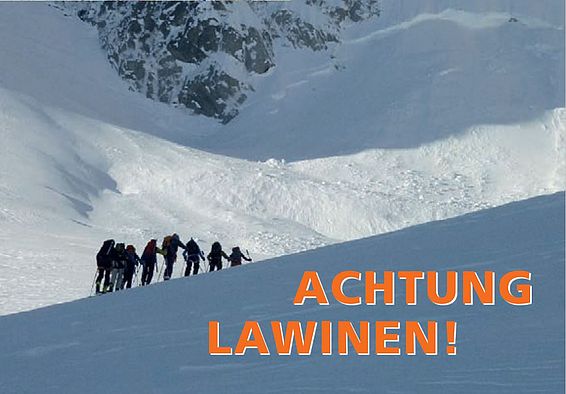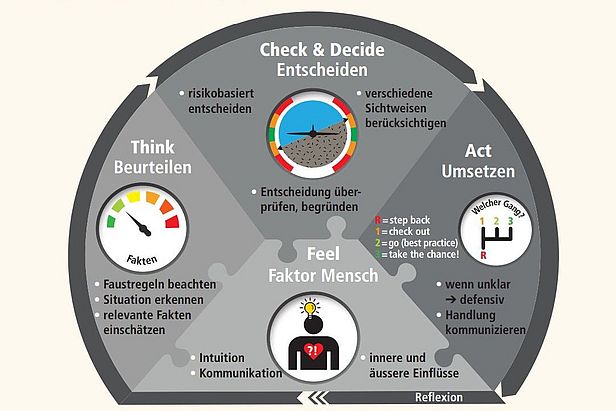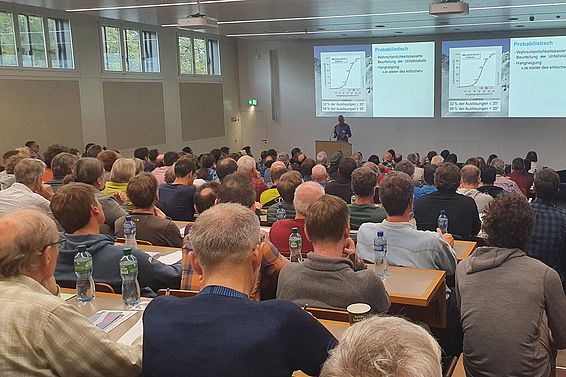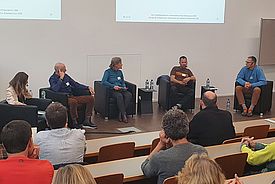18.11.2022 | Birgit Ottmer | News SLF
Mountain/tour guides and skiing instructors learnt about the latest avalanche prevention tools and methods at the Avalanches Forum. This will help all avalanche course providers in Switzerland to communicate the same core content.

Ski touring, snowshoeing and freeriding are activities enjoyed by very many people in Switzerland each winter. These pastimes expose them to the danger of avalanches, meaning that there is a lot of demand for avalanche courses where they can learn from a tour or mountain guide how to plan tours properly and reduce their avalanche risk when off-piste.
In the Snow Sport Avalanche Accident Prevention core training team (KAT), 14 Swiss snow sport organisations and associations coordinate with each other on what is taught as part of such courses. The idea is that snow sport enthusiasts will learn about the same content and methods and be issued with the same documents, regardless of where their course takes place and who the provider is. In this context, the KAT has also produced the latest versions of the now almost legendary 'Caution – Avalanches!' leaflet (English version in progress, German and French already available).
The KAT has now presented its work to a wider specialist audience for the first time. Some 200 people who run avalanche courses (mountain guides, Swiss Alpine Club (SAC) ski tour guides, skiing instructors, owners of mountain sports companies, etc.) gathered in Lucerne in early November for the one-day Avalanches Forum. Representatives of the various associations and organisations informed the participants about the latest teaching content and perspectives.
New tools: RiskCheck and Cockpit ¶
They had a particularly lively discussion about 'RiskCheck', presented by Stephan Harvey, which provides guidance on assessing the avalanche risk at key points from planning to the individual slope. It is all about recognising and evaluating the hazard, forecasting the consequences of an avalanche and thus assessing the risk, taking account of (effective) measures. The main new element is the focus on consequences. The potential consequences of triggering an avalanche – for example, whether there is a risk of falling over a rock face or being buried under deep snow cover – have a decisive influence on the risk. They are often easier to forecast than the likelihood of an avalanche being triggered. However, this too is important, and is estimated based on the processes that are key to avalanche formation. Given the current avalanche problem, the following questions arise: Is there a weak layer? Does it have a slab of snow above it? Is it possible that I will trigger a release? Does the slab contribute to crack propagation?

Participants in the intensive RiskCheck workshop also picked up a straightforward signalling system in which the thumbs of both hands indicate the various stages of RiskCheck, culminating, in the last stage (all being well), in a 'thumbs up'.
Once the risk has been assessed, a decision must be made. To this end, Markus Müller presented the 'Cockpit for decision-making' tool. The idea is that by internalising a graphic, users factor in all the key aspects when making decisions. Here the human factor – including their own intuition – is just as important as an expert assessment of the avalanche danger. Last but not least, the decision must then be acted upon and communicated to the group.
What if it happens anyway? ¶
Other talks and workshops addressed new findings in avalanche research, the (apparent) contradiction between probabilistic and analytical methods, innovations in the avalanche bulletin, the online tools White Risk and Skitourenguru, and dealing with errors and near-misses.
The panel discussion 'What if it happens anyway?' brought the event to a close. A lawyer, a representative of a mountain sports provider as well as a tour guide and a mountain guide who had both experienced fatal accidents with their groups discussed the legal repercussions of an accident; relations with the media and the police; how to deal with victims' relatives and the other members of the group; and above all what is happening in your own head and how to find peace with yourself. They all agreed that in such cases you should definitely seek assistance, not only from a lawyer but also to help process the experience in your own mind and for organisational matters, as the provider also bears a moral responsibility. A quick survey of the audience revealed that around half of those present had witnessed or been party to a fatal mountain accident (not all avalanches and mostly not in a position of responsibility). There was therefore a great deal of interest in this issue, and many expressed tremendous respect and admiration for the two people directly affected who spoke so openly about their experiences during the panel discussion.
The following associations are partners in the Snow Sport Avalanche Accident Prevention core training team:
- Alpine Rettung Schweiz (ARS)
- Federal Office of Sport (FOSPO)
- Naturfreunde Schweiz (NFS)
- Schweizer Schneesport Berufs- und Schulverband (SSBS)
- Seilbahnen Schweiz (SBS)
- Suva (Swiss National Accident Insurance Fund)
- Swiss Alpine Club (SAC)
- Swiss Armed Forces (Mountain Centre of Competence)
- Swiss Council for Accident Prevention (BFU)
- Swiss Mountain Guides Association (SMGA)
- Swiss Ski Association
- Swiss Snowsports (SSSA)
- Valais Cantonal Rescue Organisation (OCVS/KWRO)
- WSL Institute for Snow and Avalanche Research SLF
See also http://www.slf.ch/kat
Contact ¶
Copyright ¶
WSL and SLF provide the artwork for imaging of press articles relating to this media release for free. Transferring and saving the images in image databases and saving of images by third parties is not allowed.


